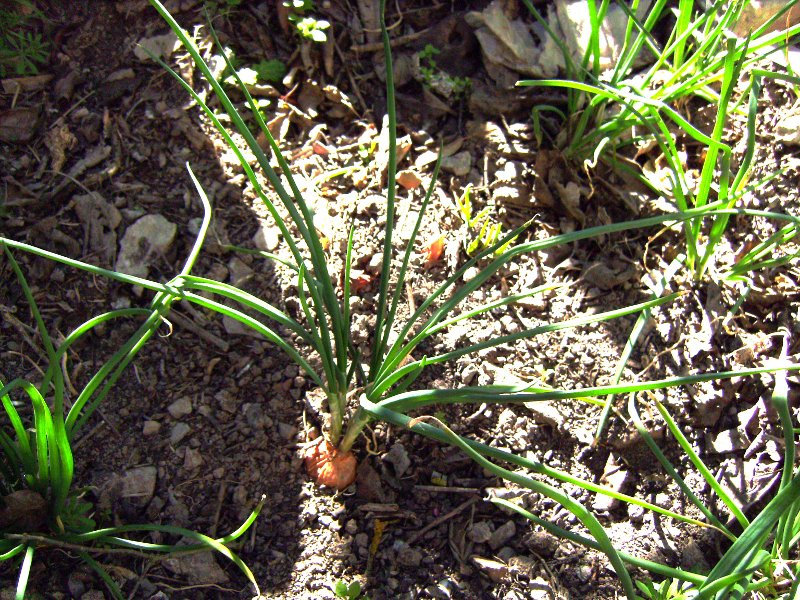Shallot

Scientific name: Allium ascalonicum
Climate: Temperate
Plant Description: Shallot is a bulbous plant that has hollow leaves, is a close relative of the onion, but its formation is similar to that of garlic. They grow in a structure made up of a head made up of several pieces. The bulb is long and the skin can be copper, reddish or gray. Inside, off-white meat is usually dyed green or magenta. The plant can reach a height of 30 cm.
Shallot is native to central Asia.
Cultivation: The shallot needs light (sandy) and medium (clay) soils and prefers well-drained, neutral, organic-rich soils. You have to be careful that it has not been fertilized with manure because excess nitrogen is harmful to it. These plants are very demanding of potassium and phosphorus, which is resolved by incorporating ash into the soil.
It cannot grow in the shade. Prefers wet soil.
In the Northern Hemisphere, the suggested planting time for the principal crop is early spring (typically in February or the beginning of March). In planting, the tops of the bulbs should be kept a little above ground, and the soil surrounding the bulbs is often drawn away when the roots have taken hold. They come to maturity in summer.
It grows in grooves and a bulb is buried for each plant you want to obtain. The bulbs must be separated from each other at a distance of 15 centimeters. Irrigation should be moderate, avoiding any type of puddling. It is necessary to periodically remove all the grass that grows around the crop. It is necessary to avoid flowering so that it does not subtract growth power from the edible part of the shallot. For this, it is necessary to remove the cap that will give rise to the flowers.
Harvesting shallots. A few days before proceeding to the task of harvesting the shallots, what is known as “treading” must be carried out - in the same way that it is done with onions and garlic - this consists of strangling or twisting the leaves. With this mechanism, during those days the shallot bulbs will gain more strength and gain weight.
When harvesting, the plant must be removed from the ground with all its bulbs. A shallot plant can contain between 2 and 10 bulbs. The leaves are removed, cutting them at the base and the bulbs are placed in net bags and hung in a cool and dry place.
It is convenient to separate those stronger bulbs for a next seeding.
 Uses: This bulb is rich in flavonoid and polyphenolic compounds, even in a greater proportion than onion or garlic. It also contains dietary fiber, vitamin C, vitamin A, vitamin B6, folic acid, and essential minerals such as potassium, calcium, phosphorus, and manganese. It helps control cholesterol levels and a better functioning of the circulatory system, which helps reduce high blood pressure and prevent atherosclerosis naturally. It helps prevent and treat allergies, which is attributed to its antihistamine, anti-inflammatory and antioxidant properties. It could also greatly reduce the risk of stomach, breast, mouth, lung and colon cancer.
Uses: This bulb is rich in flavonoid and polyphenolic compounds, even in a greater proportion than onion or garlic. It also contains dietary fiber, vitamin C, vitamin A, vitamin B6, folic acid, and essential minerals such as potassium, calcium, phosphorus, and manganese. It helps control cholesterol levels and a better functioning of the circulatory system, which helps reduce high blood pressure and prevent atherosclerosis naturally. It helps prevent and treat allergies, which is attributed to its antihistamine, anti-inflammatory and antioxidant properties. It could also greatly reduce the risk of stomach, breast, mouth, lung and colon cancer.
Shallot has antibacterial and antiviral properties, promotes detoxification of the body, helps eliminate carcinogens and toxins from the digestive tract, and can also help control blood sugar levels. The juice of the plant is used as a moth repellent, it can be rubbed on the skin to repel insects and as a preventive of oxidation in metals and polish of copper and glass.
References:
Allium cepa ascalonicum Shallot PFAF Plant Database. (n.d.). EPPO Global Database. Retrieved August 2, 2020, from https://pfaf.org/User/Plant.aspx?LatinName=Allium+cepa+ascalonicum
Archives of Medical science. (2011, February 1). Anticancer and anti-inflammatory activities of shallot (Allium ascalonicum) extract. PubMed Central (PMC). https://www.ncbi.nlm.nih.gov/pmc/articles/PMC3258679/
D’Alessandro, M. (2017, June 2). Chalota. Flores. https://www.flores.ninja/chalota/
Harrison, V. (2017, November 20). Grow Your Own Shallots - Allium ascalonicum. Allotment & Gardens. https://www.allotment-garden.org/vegetable/shallots-allium-ascalonicum-growing/
(2019, November 10). Chalota - Qué es, Propiedades, Beneficios, Usos, Contraindicaciones. TUBÉRCULOS. https://www.tuberculos.org/bulbos/chalota/
(2014, May 22). Chalotas o escalonias. Gastronomía & Cía. https://gastronomiaycia.republica.com/2008/09/05/chalotas-o-escalonias/
Wikipedia contributors. (2020, July 6). Shallot. Wikipedia. https://en.wikipedia.org/wiki/Allium_ascalonicum
En español: Chalota
